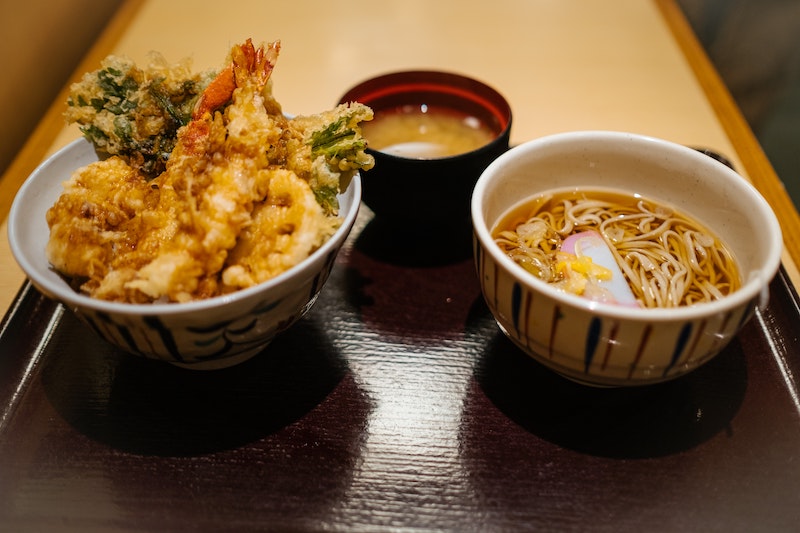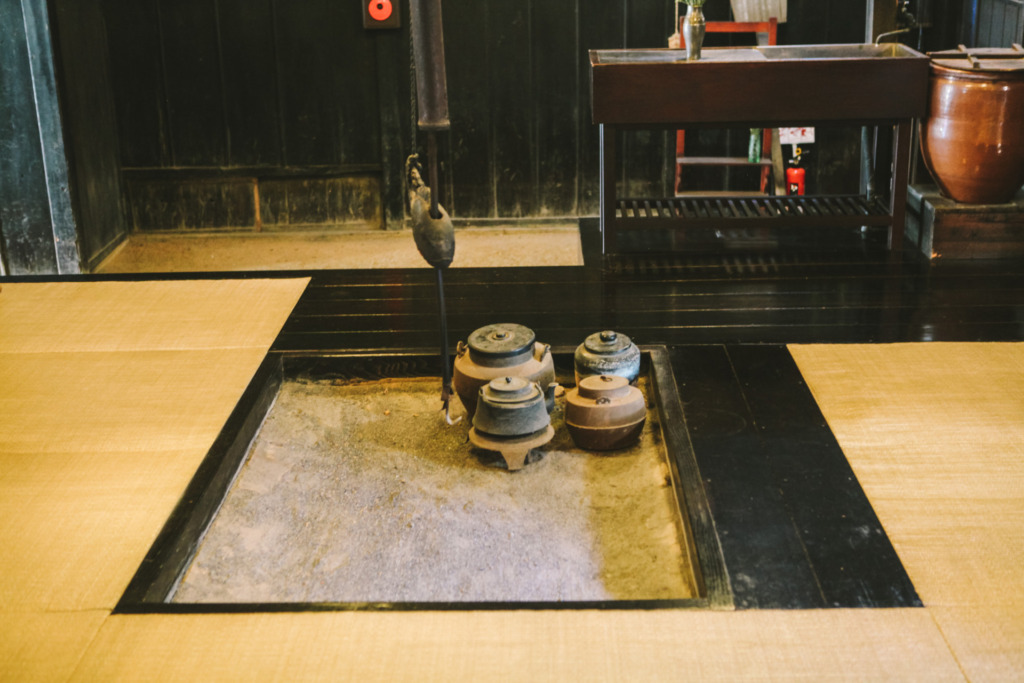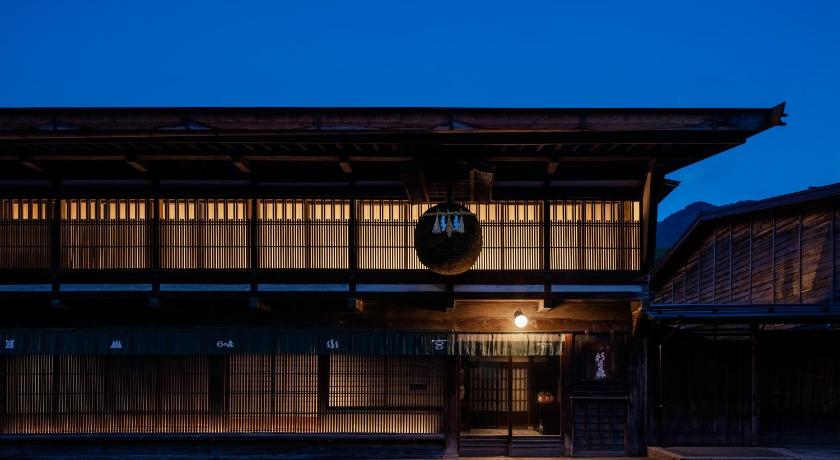VISIT NARAI-JUKU ALONG NAKASENDO [JAPAN GUIDE]

WHAT ARE THE BEST THINGS TO SEE IN NARAI-JUKU? WHAT IS NARAI-JUKU KNOWN FOR?
Discover a well-preserved heritage former post town on the famous Nakasendo Way! Narai-Juku, located in the beautiful Kiso Valley, is perhaps less well-known than Tsumago and Magome which are on the same historical path.
However, it is one of the most beautiful places along the Nakasendo Way!
Our visit to Narai-Juku was magical! We felt transported to the past, during one of the most beautiful eras of Japan! We love Narai-Juku and highly recommend that you stop by for a visit.
Ultimate Guide to Narai-Juku in Japan
Key Takeaways from a Visit to Narai-Juku in Japan:
– Narai-Juku is located on the historic Nakasendo route connecting Kyoto and Edo during the Edo period.
– Historical Significance: Experience the atmosphere of a bygone era in one of the best-preserved post towns in Japan.
– Cultural Heritage: Explore traditional wooden buildings, many of which now serve as museums, shops, and guesthouses, showcasing local crafts, art, and cuisine.
– Scenic Beauty: Enjoy the picturesque setting of this mountainous region, with opportunities for leisurely walks along the ancient highway and surrounding nature.
– Traditional Crafts: Discover local craftsmanship through unique souvenirs like lacquerware, woodwork, and textiles, highlighting the area’s rich artisanal heritage.
– We first learned about Nakasendo while watching a documentary about Joanna Lumley in Japan. You can find it on Netflix. Watching this documentary before your trip to Japan, would be a very good idea!
Have you heard of Nakasendo before? If you want to see the historical and authentic Japan, then this is one of the best places to discover!
In this guide, we describe everything you need to know to prepare for your visit to Narai-Juku in Japan!
HERE IS A SNEAK PEEK OF WHAT NARAI-JUKU LOOKS LIKE:
Are you ready to be transported in the real Japan? Here is all you need to know about a visit to Narai-Juku.
BRIEF HISTORY ABOUT NAKASENDO AND NARAI-JUKU
The Nakasendo Way, a legendary route

The Nakasendo or “Central Mountain Road” was one of the five main roads of Gokaido serving the ancient city of Edo. The path wound through the Japanese Alps, a distance of 534 km, between Edo and Kyoto.
Lords, samurai, porters, merchants, etc. used the Nakasendo for centuries. Over time, post towns were created to provide accommodation for travellers. These historical stages where the inns continue to receive today hold an important role in the preservation of the history and culture of the region.
The first weekend of June is the Ochasubo dochu festival. This tradition dates back to the Edo period, when all the local daimyō met in Kyoto and went on a procession to Edo, using the Nakasendo, to offer tea to the Shogun. The event and the parade take place in a new form these days but still remember this tradition!
Narai-Juku was once a wealthy post-town

Narai was halfway between Edo and Kyoto on the Nakasendo way.
It was the 34th of the 69 post towns on the route. It was also the station located at the highest altitude among the various stages of the Kisoji route.
During its peak, Narai-Juku received the nickname of “city of a thousand buildings”.
In 1978, the row of houses dating from the Edo period was listed as a cultural property under the category of “Traditional Building Groups of Cultural Properties of Japan”.
WHAT TO SEE IN NARAI-JUKU?
1. Stroll through Japan’s longest inn town

One of the best things to see in Narai-Juku is the long street full of well preserved old houses/inns from the Edo period.
Stroll along the main Narai-juku street which stretches for a kilometer and admire the beautiful collection of wooden buildings. Many of the buildings house traditional stalls, inns, soba noodle restaurants, lacquer workshops, souvenir shops, sake vendors…
2. Visit the Nakamura Residence

Visit the Nakamura Residence, built in the early 19th century and its splendid garden to get an idea of how Narai merchants lived in the past.
Inside the beautifully preserved house are exhibits of the combs they sold which were popular gifts of the time.
- Location: here
- Admission: 300 Yen for adults, free for children
- Opening time: 9:00-16:00
3. Visit the Daihoji Temple

Near the main street, ancient temples and shrines are worth a visit.
In the Taihoji temple, there is a statue resembling the Virgin Mary, without a head, with a child. Made in the form of Jizo, the sculpture was probably decapitated by Tokugawa followers during the persecution of Christians in Japan.
Location: here
4. Check out the well-preserved Notice Board of Narai

These notice boards can be found in all the post towns along the Nakasendo Way. They are actually a great piece of history. The boards list the regulations from the shogunate authorities to the villagers. The boards are known as the kosatsuba.
The regulations were first painted on a small wooden board and then nailed to the kosatsuba. The one in Narai-Juku is particularly well preserved!
Location: here
5. Eat at one of the many Soba Noodle restaurants

Treated yourself with soba, which is Narai’s specialty. We opted for Kanameya (かなめや) restaurant. It is also a good way to admire the interior of one of these traditional houses. This one dating from the Taisho period.
6. Visit Chosenji temple (very famous for its ceiling)

When you visit Chosenji temple make sure to look up!
You will see the “Dragon’s Great Ceiling Painting” on the main hall dating from the Meiji era. The dragon is 20 meters long and 3.5 meters wide! It’s really impressive and beautiful!
It is also called “Singing Dragon“. When clapping your hands right under the eyes of a dragon the mechanism in the eyes echoed and a unique sound was heard throughout the temple. Unfortunately, the sound is no longer echoing due to the building getting old…
Check out their website to see the dragon’s painting in more detail. (Location)
7. Be amazed at the Kamidonya Shiryokan house

The Tezuka family, ran a wholesale business that supported the activities of the Narai-Juku post station for about 270 years from 1602. It is now open to the public.
The interior of the house is stunning! This is one of the best things to see in Narai-Juku!
Website: here / Location: here
8. Buy some unique souvenirs from Narai-Juku

As in most traditional villages along the Nakasendo route, you will find many souvenir shops.
Local crafts occupy most of the stalls. You will have the opportunity to choose between a whole series of lacquered wooden objects, the practice of which dates back 600 years and was part of the reputation of the village during the Meiji period. A
s base materials, artisans use Kiso cypress and Sawara.
Among the most popular items, you have the Kiso Shiki which includes a whole bunch of lacquered wooden kitchen utensils (plates, chopsticks, spoons, trays, etc.). Magemono are another specialty of Narai craftsmen. These are bento boxes and wooden cups made using a very old technique.
9. Take time to cross the old Kiso Bridge
The large Kiso Ohashi (木曽の大橋) bridge that crosses the Narai River is one of the best things to see in Narai. This 300-year-old bridge is absolutely stunning! The most beautiful view of the bridge is from under where you can admire the magnificent woodwork and iron herringbone!
Location: here
10. Visit Hachimangu with its 200 Jizo, the last stop at Narai-Juku

At the edge of the village, you can go for a short uphill hike to reach the Hachimangu shrine nestled in the forest. From there go down for about 20m on the right side. You will find Nihyaku Jizo.
You will see these 200 stone statues displayed in the forest. A great way to finish you visit of Narai-Juku!
Useful information about Narai-Juku
The weather in Narai-Juku

Narai is generally much colder than in Tokyo. Rainfalls are also very frequent in this part of Japan even during the driest months. The average annual temperature in Narai is 11.3°C.
We recommend visiting Narai-Juku in Spring or Autumn for the best seasons!
READ: WHEN IS THE BEST TIME TO VISIT JAPAN?
How to get to Narai-Juku?

Narai-Juku is served by the JR Chuo Line local train. From Matsumoto in the north, the journey takes about fifty minutes.
From Shinjuku Station in Tokyo, allow three hours of travel on the Azusa train, with a change at Shiojiri. If you are in Nagoya, board the Shinano Express, then change to the local Kiso Fukushima line – the trip takes a total of 2.5 hours.
Remember to buy your JR PASS when traveling by train to Japan, you will save lots of money! BUY IT HERE.
How to get around in Narai Juku?
Good news, it’s all within walking distance. You can visit Narai Juku on foot.
Staying overnight in Narai Juku



Why not staying overnight in Narai-Juku? After 5pm you will have the entire place more or less to yourself as all tourists tend to leave before 5pm.
There aren’t many places to stay in Narai-Juku, however, we recommend the stunning BYAKU Narai! You will be staying in a beautifully renovated traditional inn, feeling like a samurai hundred years ago.
Other things to see near Narai-Juku?
1. Tsumago

When you arrive in Tsumago another beautiful post town along Nakasendo, time seems to rewind and you rediscover all the charm of ancient Japan. The dark wooden buildings stand tall. Shrubs line the narrow streets. No telegraph pole or television antenna in sight.
The government has made it a point of honor to preserve a traditional decor, authentic as in the time of the lords who visited it hundreds of years ago.
Tsumago is one of the best places to visit along Nakasendo.
READ: FULL GUIDE FOR A VISIT OF TSUMAGO
2. Magome

Magome is a village nestled in the Kiso Valley along Nakasendo. The village rises to 801m above sea level. It is a former post town exactly like Tsumago and Narai-Juku.
Actually, out of the 3 post towns, Magome is actually our favorite one! This town is so beautiful. This is what Japan is all about for us. We would easily rank Magome as one of the best things to see in Japan!
With its charm, its fascinating landscape, its cobbled and authentic streets and its welcoming locals, Magome is a fantastic place to visit.
READ: FULL TRAVEL GUIDE FOR MAGOME
3. Kiso Valley

The Kiso Valley lurks along the Japanese Alps and the Kiso River, between Nagano Prefecture and Gifu. Its secular atmosphere contrasts with the wild authenticity of its landscapes, an ode to time travel for visitors.
Between imposing cliffs, the Kiso Valley stretches 52 km from east to west and 63 km from north to south. Its landscape dominated by lush vegetation and majestic mountains is a real natural treasure.
The valley is crossed by the old trade route of Nakasendo. The Kisoji section, which stretches for a distance of 70 km.
The Kiso Valley is home to around 11 towns called “juku” or post towns whereby Magome, Tsumago and Narai are the best preserved.
4. Momosuke Bridge


Between Narai and Tsumago make sure to stop at the impressive Momosuke Bridge!
This is a picturesque bridge where you can take some amazing photos! There’s also a small, quiet park under the bridge with some picnic benches and tables. You can even play mini golf there if you bring your own equipment.
Location: here / More info: here
Final thoughts – Is Narai-Juku worth visiting?
Without a single doubt, Narai-Juku is not only worth visiting, but it is also one of the best things to see in Japan! We traveled along the Nakasendo route for a few days exploring many town posts, hiking through hills, crossing rivers and meeting many locals.
This is one of our best trip ever! Not only in Japan… Besides Mt. Fuji, Kyoto or Tokyo which are most visited during a trip to Japan, we actually much preferred our trip along Nakasendo.
There are fewer tourists and the well-preserved towns make you travel back in time in the samurai era. It’s fascinating!
We hope that you found this post useful to help you prepare for your trip to Japan. We wrote many other posts about Japan here.
Related posts
- FULL GUIDE FOR A VISIT OF TSUMAGO
- TRAVEL GUIDE FOR MAGOME
- HIKE ALONG NAKASENDO
- BEST THINGS TO SEE IN THE JAPANESE ALPS
- 15 BEST THINGS TO SEE IN HAKONE NEAR MT. FUJI
- 15 INCREDIBLE THINGS TO SEE AT LAKE KAWAGUCHI
- OBUSE, A BEAUTIFUL TOWN IN JAPAN WORTH A VISIT
- 10 BEST THINGS TO SEE IN MATSUMOTO
- FULL GUIDE FOR VISITING HAKUBA IN JAPAN
- DISCOVER LAKE YAMANAKA NEAR MT. FUJI
- 30 AWESOME THINGS TO DO IN SAPPORO
- 10 BEST THINGS TO SEE IN MONZEN-NAKACHO IN TOKYO
- EXPLORE KAGURAZAKA, THE THE LITTLE PARIS OF TOKYO
- BEST THINGS TO SEE IN KYOTO







![GUIDE TO THE BLUE MANSION IN PENANG [CHEONG FATT TZE]](https://afuncouple.com/wp-content/uploads/2023/05/IMG_8192-768x512.jpg)
![15 BEST ROOFTOP BARS IN SEOUL [FULL GUIDE]](https://afuncouple.com/wp-content/uploads/2021/09/Le-Style-Bar_01-768x384.jpg)
![10 AWESOME THINGS TO DO IN SEMINYAK [BALI GUIDE]](https://afuncouple.com/wp-content/uploads/2023/07/Best-things-to-do-in-Seminyak-4-768x598.webp)
![13 GREAT THINGS TO DO IN TAEAN [SOUTH KOREA]](https://afuncouple.com/wp-content/uploads/2020/06/TAEAN-SUNSET-e1592011726840-768x578.jpg)

